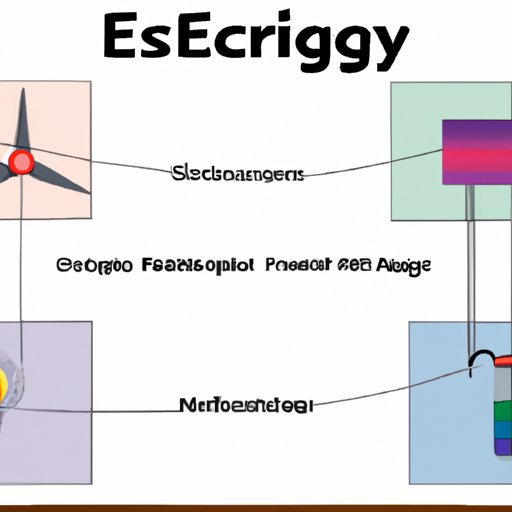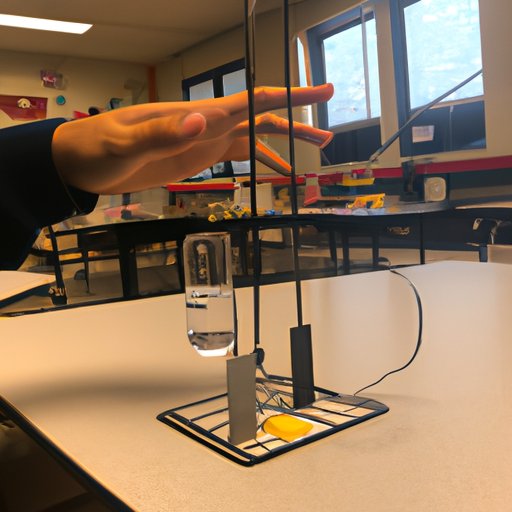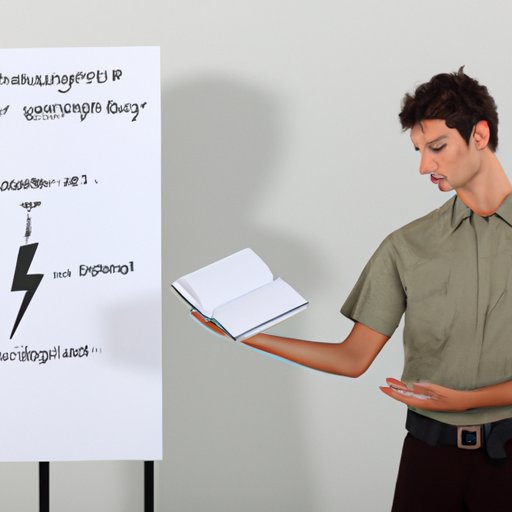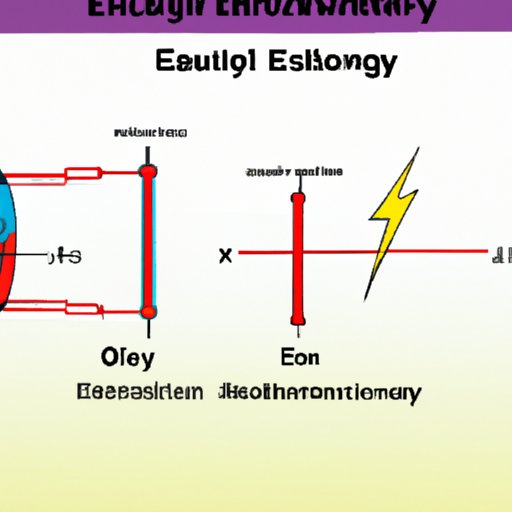
An Overview of Energy in Physical Science
Energy is a fundamental concept in physics that describes the ability to do work or cause change. It is the capacity for an object to perform an action or produce a result. In physical science, energy can take many forms, including kinetic, potential, thermal, chemical, nuclear, and electrical. This article will explore these different types of energy, as well as the conservation of energy, how it is transformed and transferred, and its impact on matter.

Exploring the Different Types of Energy in Physical Science
The different forms of energy in physical science can be divided into two categories: kinetic energy and potential energy. Kinetic energy is the energy of motion, while potential energy is the stored energy of an object due to its position or state. Let’s look at each type of energy in more detail.
Kinetic Energy
Kinetic energy is the energy of motion. It is the energy possessed by an object due to its motion. This type of energy increases with the speed of the object, so the faster an object moves, the more kinetic energy it has. Examples of kinetic energy in physical science include a roller coaster car moving along a track, a baseball traveling through the air, or a wave crashing against the shore.
Potential Energy
Potential energy is the stored energy of an object due to its position or state. It is the energy that an object has because of its location or configuration. For example, a book sitting on a shelf has potential energy because of the gravitational pull between it and the Earth. Other examples of potential energy include a stretched rubber band, a coiled spring, and a raised hammer.
Thermal Energy
Thermal energy is the energy of heat. It is the internal energy of a system due to its temperature. This type of energy is present in all matter, even at very low temperatures. As the temperature of a system increases, its thermal energy increases. Examples of thermal energy in physical science include hot water, steam, and burning wood.
Chemical Energy
Chemical energy is the energy stored in the bonds of atoms and molecules. It is the energy released or absorbed during a chemical reaction. This type of energy is often used to power machines and other devices, such as batteries and fuel cells. Examples of chemical energy in physical science include gasoline, natural gas, and coal.
Nuclear Energy
Nuclear energy is the energy released from nuclear reactions. It is the energy released when the nucleus of an atom is split or combined. This type of energy is used to generate electricity in nuclear power plants. Examples of nuclear energy in physical science include uranium, plutonium, and thorium.
Electrical Energy
Electrical energy is the energy of electric charge. It is the energy carried by charged particles, such as electrons and protons. This type of energy is used to power electrical devices, such as computers, light bulbs, and motors. Examples of electrical energy in physical science include lightning, static electricity, and battery power.

Examining the Conservation of Energy
The law of conservation of energy states that energy cannot be created or destroyed; it can only be changed from one form to another. This means that energy is always conserved, no matter what transformations or transfers take place. The total amount of energy in a system remains constant, even though it may appear to be changing.
In physical science, energy can transform and transfer in a variety of ways. Heat transfer is the process in which energy is exchanged between two objects or systems due to a difference in temperature. Work is the transfer of energy from one object to another through the application of force. And power is the rate at which energy is transferred or transformed.
How Energy is Transformed and Transferred in Physical Science
Heat Transfer
Heat transfer is the process in which energy is exchanged between two objects or systems due to a difference in temperature. Heat always flows from a hotter object to a colder object. This transfer of energy can occur through conduction, convection, and radiation.
Work
Work is the transfer of energy from one object to another through the application of force. When a force is applied to an object, it causes the object to move in the direction of the force. This movement requires energy, which is transferred from the object doing the work to the object being moved. This transfer of energy is known as work.
Power
Power is the rate at which energy is transferred or transformed. It is a measure of how quickly work is done or energy is converted from one form to another. The higher the power, the faster the work is done or the faster the energy is converted.
Investigating the Impact of Energy on Matter
Energy has a significant impact on matter. It affects the temperature, pressure, and volume of a system. Let’s look at how energy affects each of these properties.
Energy and Temperature
Energy affects the temperature of a system. As energy is added to a system, its temperature increases. Conversely, as energy is removed from a system, its temperature decreases. This is known as the first law of thermodynamics.
Energy and Pressure
Energy also affects the pressure of a system. As energy is added to a system, its pressure increases. Conversely, as energy is removed from a system, its pressure decreases. This is known as the ideal gas law.
Energy and Volume
Finally, energy affects the volume of a system. As energy is added to a system, its volume increases. Conversely, as energy is removed from a system, its volume decreases. This is known as the Charles’s law.
The Role of Energy in Motion and Force in Physical Science
Energy is also essential for motion and force in physical science. Newton’s laws of motion describe the relationship between force, mass, and acceleration. Momentum is the product of an object’s mass and velocity, and is a measure of its motion. Centripetal force is the force required to keep an object moving in a circle, while gravitational force is the attractive force between two objects due to their masses.
In conclusion, energy is a fundamental concept in physical science. It can take many forms, including kinetic, potential, thermal, chemical, nuclear, and electrical. It is subject to the law of conservation of energy, meaning that it cannot be created or destroyed but can only be changed from one form to another. Energy transforms and transfers in a variety of ways, such as heat transfer, work, and power. It also has an impact on matter, affecting its temperature, pressure, and volume. Finally, energy is necessary for motion and force in physical science, as described by Newton’s laws of motion, momentum, centripetal force, and gravitational force.
(Note: Is this article not meeting your expectations? Do you have knowledge or insights to share? Unlock new opportunities and expand your reach by joining our authors team. Click Registration to join us and share your expertise with our readers.)
